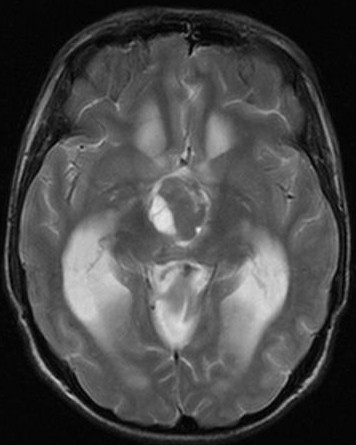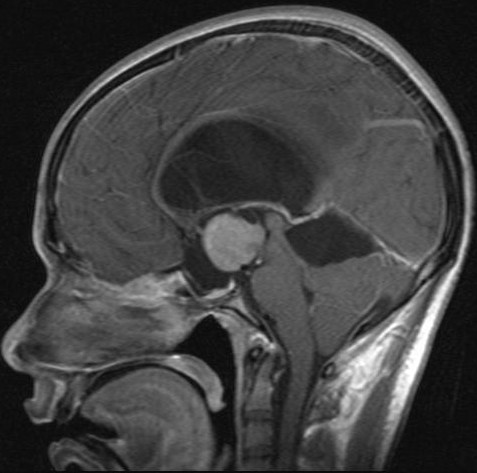Subependymal giant cell astrocytoma (SGCA) is a circumscribed tumor associated with tuberous sclerosis (TS). A nodule is located at or near the foramen of Monro proliferates into a sizable mass that can cause ventricular obstruction and become symptomatic. Whether or not SGCA can occur in the absence of tuberous sclerosis (TS) is debatable.
INCIDENCE:
SGCAs can occur in 10% to 15% of patients with TS.
AGE:
Most patients become symptomatic before the age of 20 years. Symptoms are related to ventricular obstruction.
LOCATION:
Foramen of Monro.
NATURAL HISTORY:
SGCAs are slow growing and indolent. Long term survival rate is usual even after subtotal resection.
IMAGING:
CT FINDINGS: A focal mass at the Foramen of Monro with enlarged lateral ventricles is seen. Calcified subependymal nodules along the striothalamic groove can often be identified. SGCAs are heterogenous neoplasms with mixed hypo-and isodense regions. Calcification and cyst formation are common. Contrast enhancement is seen which is inhomogeneous.
MR FINDINGS: The heterogenous gross pathology of SGCAs is reflected by mixed signal intensities on both T1WI and T2WI. Most SGCAs are hypo- and isointense on T1WI and iso-to hyperintense on T2WI sequences. Enhancement is strong but inhomogeneous.
OTHER DIFFERENTIALS ARE:
1) Ependymoma.
2) Meningioma.








